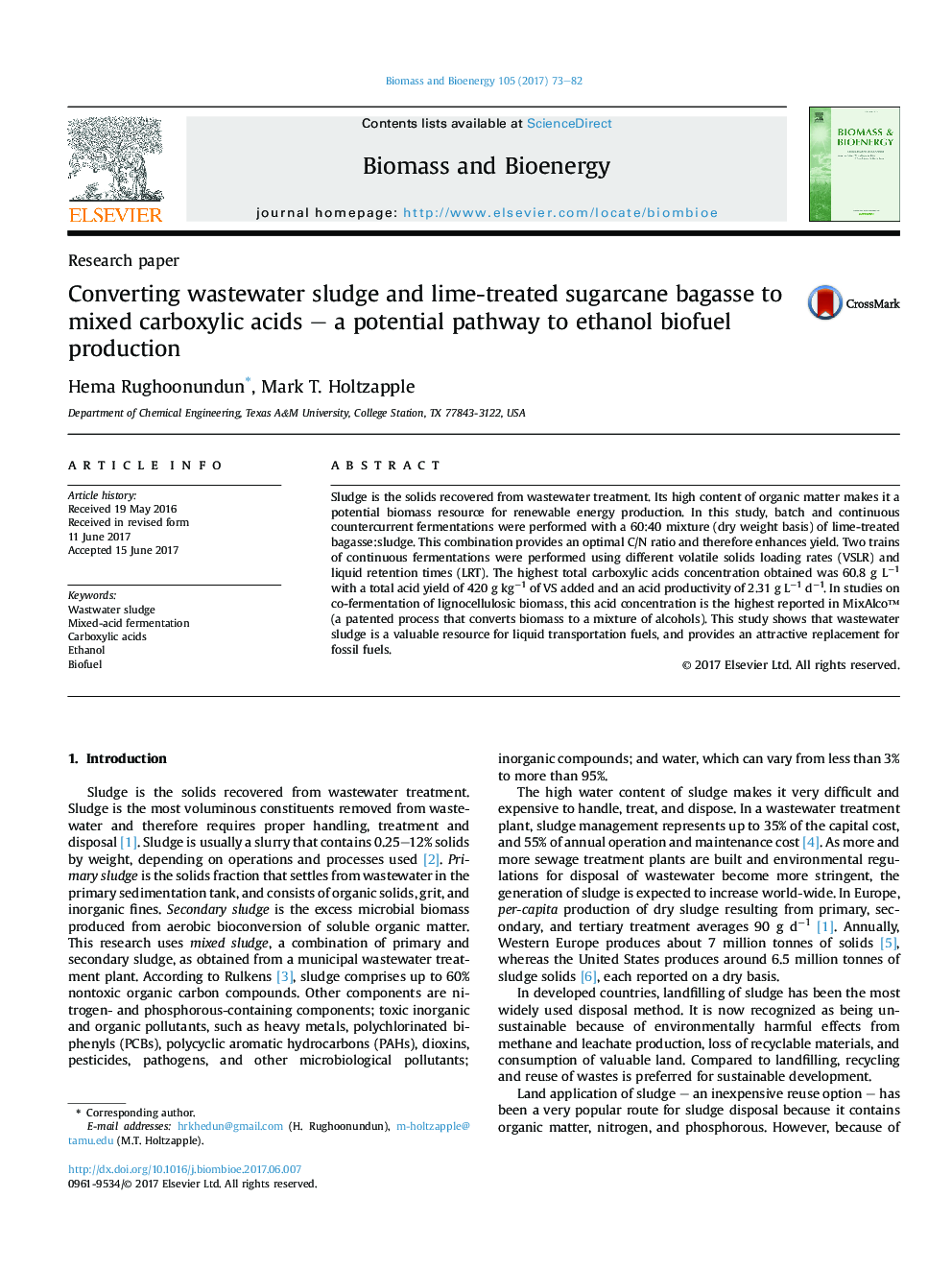| Article ID | Journal | Published Year | Pages | File Type |
|---|---|---|---|---|
| 4996146 | Biomass and Bioenergy | 2017 | 10 Pages |
Abstract
Sludge is the solids recovered from wastewater treatment. Its high content of organic matter makes it a potential biomass resource for renewable energy production. In this study, batch and continuous countercurrent fermentations were performed with a 60:40 mixture (dry weight basis) of lime-treated bagasse:sludge. This combination provides an optimal C/N ratio and therefore enhances yield. Two trains of continuous fermentations were performed using different volatile solids loading rates (VSLR) and liquid retention times (LRT). The highest total carboxylic acids concentration obtained was 60.8 g Lâ1 with a total acid yield of 420 g kgâ1 of VS added and an acid productivity of 2.31 g Lâ1 dâ1. In studies on co-fermentation of lignocellulosic biomass, this acid concentration is the highest reported in MixAlco⢠(a patented process that converts biomass to a mixture of alcohols). This study shows that wastewater sludge is a valuable resource for liquid transportation fuels, and provides an attractive replacement for fossil fuels.
Related Topics
Physical Sciences and Engineering
Chemical Engineering
Process Chemistry and Technology
Authors
Hema Rughoonundun, Mark T. Holtzapple,
